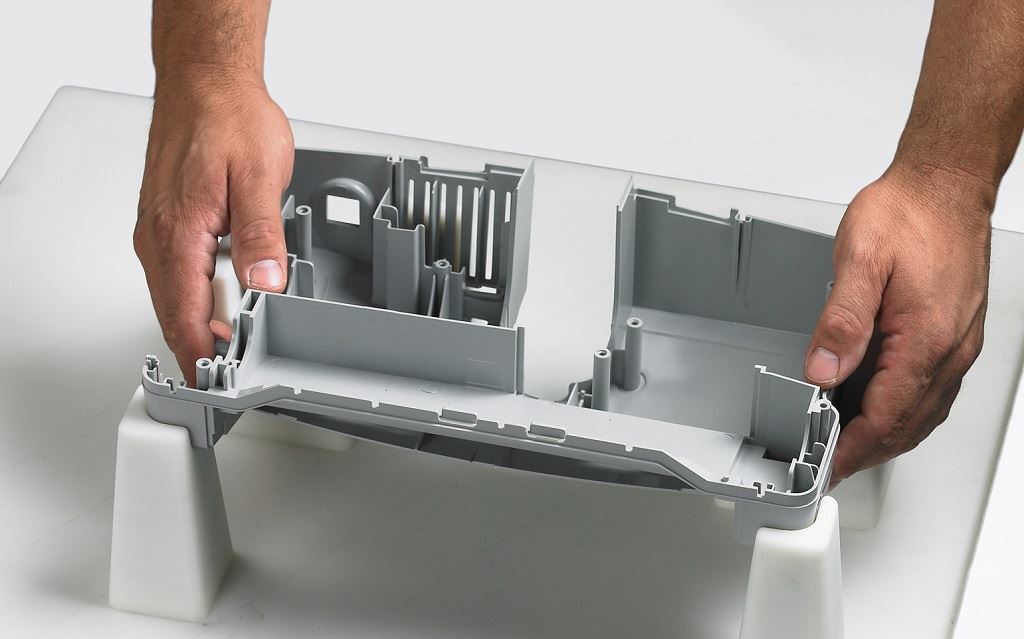![An assembly jig (white) printed on an FDM printer holding an injection molded part (dark grey) - What’s great is that the 3D printed part is so useful but so ‘boring’ it almost fades into the background: it’s just something that works. [Image: Stratasys]](https://fabbaloo.com/wp-content/uploads/2020/05/SSYSjig_img_5eb09a990b664.jpg)
I think it’s wonderful that additive manufacturing may be boring: that means it’s getting real.
Yesterday I had the pleasure to address this topic in a keynote for the Northeast Ohio Additive Manufacturing Cluster. The meeting, one of the Cluster’s largest to date, brought in a crowd of academics, engineers, executives, bankers, and more to the University of Akron.
Northeast Ohio has a legacy in manufacturing as part of the Rust Belt. Initiatives embracing advanced technologies including additive manufacturing are seeing the area transition into the Tech Belt. With organizations like America Makes and the Youngstown Business Incubator headquartered in Ohio and several universities and companies offering focus on 3D printing, I’m fortunate to call this area my home as it turns out I don’t always have to travel the world to find innovations in 3D printing.
That’s exciting though, right?
I counter: is manufacturing exciting?
It shouldn’t be, really. Manufacturing is making things, which should also apply to additive manufacturing. Does the way something is made necessarily make that something headline-worthy?
Yes and no. We do need to talk about industrial revolutions while they’re happening, but only until we don’t need to anymore. Traditional manufacturing is so thoroughly established that we don’t need to espouse the benefits of the assembly line anymore. What was a necessary conversation in 1913 isn’t today, because it’s well understood that assembly lines make sense. In 2019, additive manufacturing is becoming more of a mainstay but still isn’t the norm.
But how exciting that it will be.
“Boring is good, because it means it’s real.” –@SarahGoehrke on the future of #3DP in Manufacturing pic.twitter.com/URujDzXTtB
— NEOhioAMCluster (@NEOhioAMCluster) March 21, 2019
What had been hyped up circa 2012-2015 has seen a gradual change. No, not “the death of 3D printing” that replaced the earlier “It’s a Star Trek replicator!!” headlines, but rather something simpler: “We just want it to work.”
Just wanting something to work as it should is a baseline in manufacturing, and it’s becoming so as well in additive manufacturing.
For 3D printing companies, ISO certifications are still big news, whereas it’s just assumed that they have been achieved for traditional manufacturing facilities. That we’ve seen so many ISO announcements in 3D printing, though, speaks to the fact that that is becoming more common.
We’ll still be talking about the adoption of 3D printing for a while yet (which is pleasant for those of us whose livelihoods depend on those discussions), but it’s good to observe that each conversation is becoming more informed. For the past few years, major trade shows have shown that attendees come in with more understanding than ever before; it’s been a while since “So, what’s 3D printing?” has been the first question at booths. Instead it’s “What sets your 3D printing technology/material/software apart?” or “Can your process do [complicated thing]?”
Slowly, but noticeably, these baselines are rising.
There’s still a long way to go, and it won’t all be boring, but 3D printing is already a reality in serial production today in some big ways (dental aligners and hearing aids being major examples of industry-wide acceptance). And as more industries continue to adopt the technology, and more students gain access to education and training in design for additive manufacturing, these levels will continue to rise.
I happen to think it’s very exciting that 3D printing is moving toward the mundane.

